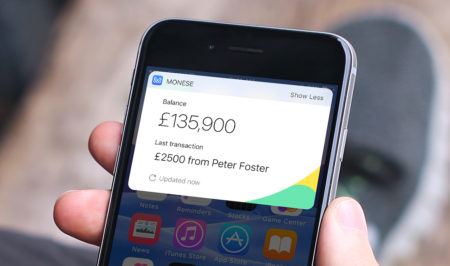Being a solopreneur is a lot of fun.
You almost always get to make your own schedule, wear whatever you want, reject projects that aren’t a good fit, not drive during rush hour…it’s an all-around pretty amazing job.
Except when it’s not, like when you have to have a tough conversation with a client because:
- What they want to do is going to cost them more money
- They’re unhappy with the bill
- They don’t like your proofs
- You’re not going to make a deadline
- (really I could go on for quite some time)
These are the conversations where you wish you had an account manager, amIright?
Money Note: If an extra $1K–$5K/month would change your 2026 goals (debt, savings, travel, freedom), you’ll want to catch this: free live workshop from a freelancer who’s earned $4M+ online. No fluff. No gimmicks. A real roadmap. 👉 Watch the training or save your seat here »
(These are the times I wish I had an account manager.)
And you’re probably procrastinating a just a bit on actually having the conversation, too, because it might get messy, you might have to negotiate, and suddenly all of the doorknobs in your house urgently need to be polished.
So when you’re stuck in a situation like this, here’s how to handle those tough client conversations like a pro and save the relationship.
Note: Let’s assume you want (or need) to save this relationship. If you don’t, keep your cool, be professional, and fire your client.
First things first: establish outcomes
Before you even think about what you’re going (or not going) to say, think about outcomes:
- What does the most favorable outcome look like to you?
- Acceptable outcome?
- Least favorable?
Establishing your boundaries and goals for the conversation ahead of time gives you the confidence to negotiate smartly while you’re in the heat of discussion and the best opportunity to steer the resolution in the direction you want it to go.
Essentially, you need to know where you’re headed if you want to drastically improve your chances of getting there.
Second: determine your approach
Now that you know what you want out of the conversation, the next step is determining how to get there.
This is one of the harder parts of tough client conversations, and where having learned about your client as a person can pay off. Knowing your client’s personality and tendencies helps you craft your words in a way that’s least confrontational and offensive to them.
Because your main take-away from this step of the process is: it’s not what you say, it’s HOW you say it.
And on top of that, don’t forget to:
- Be honest
- Be polite but firm
- Apologize if it’s your fault
- Be professional; leave your emotions out of it
- Refer to your contract and/or email exchange when possible
I know this is way more challenging that it sounds, especially if you’re emotionally-charged. So feel free to use these exact examples (or modify them to suit your situation) when figuring out what you’re going to say.
Additional cost
What you want to say: “This is going to cost you more money.”
How to say it:

- “Per our contract, these revisions fall under my hourly rate of $X. Are these changes still a go?”
- “These additions fall outside the scope of our contract. Would you like me to prepare a quote?”
Pro tip! Remind your clients when they’re about to use their last revision so they know the next one (or 700) are going to cost extra.
Invoice disputes
What you want to say: “Just pay the darn bill!”
How to say it:
- “We’ve accomplished every item under the scope of the project contract…can you help me understand what your concern is?”
- “I understand you’ve got some concerns regarding your invoice…what item(s) would you like to discuss?”
- “I’m sorry the additional cost surprised you. In this email dated <insert date>, I received approval to work on these additional changes.” (Include their actual words.)
(Struggling with an invoice dispute right now? Click here for more tips on finally getting paid!)
Unhappy with design / concepts
What you want to say: “That’s the EXACT opposite of what you asked for!!!” or “That would’ve been useful to mention in our initial meeting.”
How to say it:
- “I took a look at my notes and our contract regarding <insert issue here>. Based on these parameters, here’s how I see this design(s) fulfills our needs…”
- “I can’t find anywhere in my notes that we discussed <insert element>. I’m happy to add it in our next revision.” (See above if you’re headed outside the scope of your contract.)
- “I’m sorry, I must’ve misunderstood our intended design style. Let’s discuss specifically what elements you’d like to see adjusted.”
Missing a deadline
What you want to say: “I need more time.” or “Your inaction is going to cause us to miss our deadline.”
How to say it:
- “I know I promised to have design concepts to you on Wednesday, but I’m just not quite happy with these concepts yet to share. Would Friday be okay?”
- “This is just a friendly reminder that in order to meet our deadline, I need <insert element> no later than <insert date>.”
- “<Insert reason> has come up and the soonest I’ll be able to complete your project is <insert date>. I’m very sorry for the inconvenience, and if it’s imperative to finish on schedule, I would be happy to refer you to a colleague of mine.”
Third: own your decision
Once you’ve decided how you’re going to handle a tough client conversation, you’ve got to build up your confidence so you don’t sound like the ball of nerves you’re going to be.
Write yourself notes and/or practice what you’re going to say. Clients can smell fear and will use any advantage they can to negotiate a lower bill.
Finally: talk to your client
Okay, you’re all set!
Arm yourself with the following and go get ’em!
- Notes on your talking points and boundaries
- Full drink (in case your throat gets dry)
- Enough time to handle the conversation (don’t put yourself in a position to have to rush it or continue at a later date)
- Distraction-free environment (no pets, kids, spouses, roommates, social media, etc.)
Pro tip! Get dressed, and put on a business shirt. (Don’t even lie to me…I know you’re wearing sweats.) You’d be surprised how much more professional and confident you feel.

Pro tip #2! Just before your conversation, stand for 2 minutes with your feet slightly wider than shoulder-width apart and your arms outstretch in a similar fashion above your head. (You’ll look like an X with a head.) Studies have shown this “power” pose actually changes your body chemistry, inspiring confidence and a feeling of being in charge.
How do you handle tough client conversations?
Are you struggling with saving a client relationship? Have you used these or other techniques to totally rock a tough client conversation? Do you use a CRM for freelancers to stay organized in your client communication?
Keep the conversation going...
Over 10,000 of us are having daily conversations over in our free Facebook group and we'd love to see you there. Join us!



This was such a great article, April! I love how you gave examples of how to speak to the client! A lot of times its hard to have tact when we become frustrated with a client. Thanks!
I prevent many unpleasant client discussions by writing incredibly specific design briefs. Alas, despite my best efforts tough situations occasionally arise. Be sure that I will be referring back to this article the next time it happens! Thanks for the tips!
Good suggestions here April. The points I’m taking away are to be systematic, have a plan and take nothing personally. I notice that I have to be mentally ready for those conversations. The end of the day, for me, is generally never a good time to talk about anything serious, my mind is tired. I cannot agree more about dressing the part. There have been lots of debates lately about workplace attire and promoting a ‘wear what you want’ policy. I come from corporate so I had to dress for work for years. After going out on my own, I didn’t bother to get dressed and found that I was somehow never ready for those conversations in my sweat pants.
Great point about mental readiness! You have to ‘gear up’ for a tough conversation, and if you’re tired, hungry, distracted, or irritated, it’s not going to go as well as you want it to.
Also, I agree there’s a fine line between comfortable to work and that subtle, almost subconscious reminder that this is work, you’re a professional, and you need to act like one (both with other clients and your own productivity throughout your work day). Funny how your clothes dictate your attitude and perception of yourself, but they totally do.
Thanks for sharing!
Like any designer, I deal with these kinds of issues on occasion. I think the key take away is actually HAVE the conversation with the client. Usually when things go awry it’s due to poor communication. Being polite, friendly and upfront (and asking the same of your client) from the beginning and all the way through the duration of the project can mitigate a LOT of these.
Great post. Glad to know I’m not alone 😉